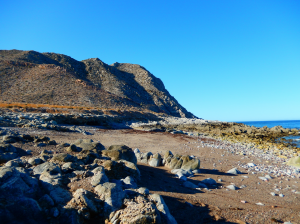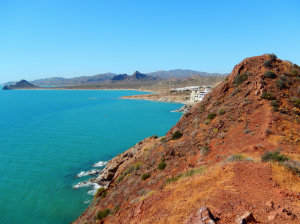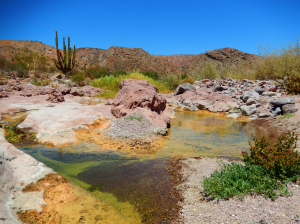When you enter the words “Why is Mexico so…” into the Google search bar, you are met with the suggestions “poor,” “bad,” “dangerous,” and “violent.”

It seems that for the majority, so many stereotypes and misconceptions come to mind when thinking about Mexico or what it means to be Mexican – almost all pejorative. There was a period of time where I would have tried to blame these sentiments and their perpetuation on the minority; on the small but vocal groups that spew bigotry rooted in ignorance. That is, until half the nation decided to band together behind the sentiment “Make America Great Again” and support the deportation of the Mexicans bringing drugs, crime, and rapists. There were even a few people that upon finding out I would be taking a course in Mexico, would stop, scrunch their nose, and ask “…Why?” This is not a “why” of curiosity; of a genuine desire to learn more about what I would by studying and my motivations for doing so. This “why” is one filled with disdain and disparagement; with the inability to fathom what Mexico could possibly have to offer if not touristy beaches and resorts during spring break.
So many of these ideas are wildly misguided and unfounded. Some may say that stereotypes have to come from somewhere and that behind any joke lies some degree of truth – to which I agree. I am not denying that Mexico has populations that are poor and regions that have violence – because it does. Acapulco is ranked the fourth most dangerous city in the world based on its murder rate. As large or important as a city may be, it does not represent a state, let alone an entire nation. As Ann Abel put into perspective, “telling people to avoid the cultural richness of Oaxaca and Chiapas or the excellent surf of Baja California Sur because there are dangerous spots in other regions is like suggesting people avoid Yellowstone because of violent protests in New York City.” America does not consist solely of Camden, Alexandria, and Detroit – the three ranked among the top for violence. In the same way, Mexico should not be viewed solely in terms of Acapulco, Culiacan, and Tijuana. And even then, when looking at some of these cities, it would be incorrect – not to mention ignorant – to see them only as areas of crime. In that thinking, you are completely discounting the value of a given community; of each of its unique features and individual contributions. Those that know Detroit know that it is so much more than a statistic. What is perhaps more important to note is the structural violence and historical context that create some of these problems in the first place.
Chimamanda Ngozi Adichie warns of the danger of a single story and its capacity to detract from gaining a comprehensive view of a given person or country. Our lives and our cultures, are composed of many overlapping stories. “The single story creates stereotypes, and the problem with stereotypes is not that they are untrue, but that they are incomplete. They make one story become the only story.”
Out of everything I have read, learned, and experienced on this trip, I have seen incredible diversity. I have seen the biodiversity contained within parts of the Gulf of California and the Sonoran Desert, I have seen the influences of Spanish and Cmiique Iitom and how language affects how one perceives the world, and I have seen considerable variation in the ways people dress, speak, and communicate with others. I have learned about adaptations of plants to their environments, ways groups change and organize to achieve a goal, and the degrees of assimilation and resistance of neighboring groups. I have seen the ways people view the world around them based on a combination of where they are from, what they do for a living, and the products of their personal experiences. I have also seen pervasive themes ubiquitous across borders: problems with conservation and the exploitation of resources, tensions within families, and economic hardship. I have seen friendship and the willingness to embrace others from a different background than yourself, unity across conflicting interests and personalities, and the desire to leave a mark on this world in a meaningful way. This trip exposed me to new perspectives while challenging my ways of thinking, and introduced me to the beauty that is Mexico – both in terms of the physical landscape and the more implicit side that comes from the soul.
There are many ways to look at a community, from a single cooperative within a small-scale fishing community to country as a whole and the varying degrees of identity people feel they possess. We know this to be true in the states, so why is it so difficult to extend this notion to another country? After all, when you enter the words “Why is America so…” the list below includes the words “fat,” “racist”, and “stupid.”
While obesity, racism, and poor outcome in education exist within the population on varying scales, many Americans would be quick to emphasize that their country is not defined by these qualities, and neither are they. Is it so implausible for the same to apply to Mexico?
This is for anyone pained by the recurring stereotypes and derogatory statements, and in particular those that are Mexican – those that will forever be proud to call themselves Mexican, and those that may still be fighting the internal shame and fear imposed by society that accompany the label. There is beauty everywhere around us, there is beauty in conviction, and there is beauty in the struggle. Mexico, thank you for everything.





